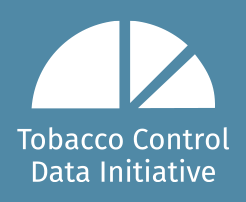E-Cigarettes use in South Africa
More than one in 10 people (11.3%) in urban South Africa reported having ever tried novel products.
The South African Treasury will introduce an excise tax of R2.90 per millilitre of e-liquid in June 2023.
Electronic cigarettes (e-cigarettes) and heated tobacco products (HTPs) (which we collectively refer to as “novel products”) are battery-powered products that typically deliver nicotine in the form of an aerosol rather than smoke.
Some products have no nicotine (defined as “electronic non-nicotine delivery systems” or ENNDS) and others vary in their nicotine concentration, and can contain up to 50mg/mL of nicotine (defined as “electronic nicotine delivery systems” or ENDS). Therefore, depending on the e-liquid and the frequency of use, a user may consume more nicotine using an e-cigarette than with a combustible cigarette. In line with popular usage, this website uses the word novel products as a collective that includes ENDS, ENNDS, and HTPs as well as e-shisha and e-cigars.Novel products are marketed as a less harmful alternative to cigarettes and have seen a rapid growth in popularity across many countries.
However, there is a growing body of evidence that smoking e-cigarettes can lead to health risks, introduce non-smoking youth to nicotine, renormalise smoking, and reverse decades of progress in tobacco control. Novel product use continues to grow, particularly among youth. Private industry is rapidly marketing these products and taking advantage of the limited amount of regulation, while researchers are continuing to highlight the risks of novel products. Over 100 countries have implemented regulations to reduce the growth in novel product use, including African countries like Egypt, Senegal, and Uganda.The South African Health Products Regulatory Authority (formerly the Medicines Control Council) classifies novel products as Schedule 3 substances and requires them to be dispensed only within pharmacies. Novel products are, however, sold widely and are often marketed as cessation aids.
Unless otherwise cited, the South African data presented on this page are analytics derived from the South African E-Cigarette Survey 2022 led by the TCDI
which aimed to explore novel product user behaviour to inform policy decisions. The dataset provides a nationally representative sample of adults (18 years and older) residing in urban areas in South Africa. The final sample consisted of 21,263 respondents. All statistics reported from this survey are statistically significant at the 5% level, unless otherwise stated. The dataset, user manual, and questionnaire are available for public download on the Data and Methods page. Download a report of our findings here or a one page fact sheet with the key findings here.Electronic Nicotine Delivery Systems (ENDS)
These products heat a nicotine-containing liquid that may be derived synthetically or naturally from the tobacco leaf. ENDS may contain flavourings and other ingredients to create an aerosol (Example: Twisp)
Electronic Non-nicotine Delivery Systems (ENNDS)
ENNDS heat a non-nicotine liquid that may contain flavourings and other ingredients to create an aerosol (Example: Eciggies berry or cinnamon concentrates)
Heated Tobacco Products (HTPs)
HTPs (also known as heat-not-burn products) consist of heat-processed tobacco leaves that allow users to inhale nicotine aerosol
(Example: IQOS, Glo)In South Africa, there are 2,661 types of e-cigarette refill liquids, 171 different types of hardware, and over 231 unique e-cigarette websites.
11.3%
More than one in 10 people (11.3%) in urban South Africa had ever tried novel products
4.0% regularly used novel products at the time of the survey (defined as at least once a week). More than half of these users (58%) were also current cigarette. smokers.
1.5% had used novel products regularly in the past but had subsequently quit.
5.8% had experimented with novel products (defined as at least one puff but never as regularly as weekly in a typical month).
Types of E-cigarette Users by Percentage of Respondents, 2022
Source: South African E-cigarette Survey 2022
Demographics
of Novel Product Users
Regular novel product use was least common among the Black population group (2.7%) and most common among Coloureds (8.3%), Whites (7.7%), and Indians/Asians (6.7%). The latter three population groups were not statistically significantly different from each other.
Novel Product Users by Race, 2022
Source: South African E-cigarette Survey 2022
Novel Product users
by Type
Dual Users
Dual users are individuals who currently regularly use both novel products and combustible cigarettes.
2.3%
of urban South Africans were dual users.
The demographics of dual users were very similar to novel product users. Dual use was less prevalent among the Black (1.4%) population group relative to other population groups, more prevalent among males (3.1%) than females (1.4%), and more prevalent among young individuals (3.2% for those younger than 34 years), with prevalence decreasing with age.
Novel Product Users & Combustible Cigarette Smokers
Twice as many urban South Africans had smoked or experimented with combustible cigarettes (26.8%) as those who reported experimenting with or using novel products (11.3%).
Of those who had ever tried novel products, 35% were current users, compared to 47% for combustible cigarette smokers.
The most common form of novel product use was experimental use (52%), while for combustible cigarettes, it was current use (47%).
Regular past use was the least common form of use for both novel product users (13%) and combustible cigarette smokers (16%).
Types of Ever Users: Combustible Cigarettes vs Novel Products
Source: South African E-cigarette Survey 2022
Sequence of Use
Novel Products & Combustible Cigarettes
On-ramper: Someone who regularly used novel products, with no history of smoking combustible cigarettes, then started smoking combustible cigarettes and was still smoking them at the time of the survey.
Off-ramper: Someone who smoked combustible cigarettes, with no history of novel product use, then started using e-cigarettes and then quit smoking combustible cigarettes.
Of the 5.5% of urban South Africans who regularly used novel products (either currently or in the past): The majority (61%) started smoking combustible cigarettes before using novel products, while 39% had no prior history of smoking combustible cigarettes.
Of those with no prior smoking history: One in five (19%) started smoking cigarettes after using novel products (on-rampers). Further exploration is recommended to understand why they started smoking cigarettes.
Among on-rampers: Most (88%) remained smokers at the time of the survey. This is equivalent to 5.6% of all novel product users and 0.3% of people in urban South Africa.
Sequence of Use: Those Using Novel Products First
Source: South African E-cigarette Survey 2022
An excise tax for novel products will be introduced
on 1 June 2023 by the South African Treasury
The novel product excise tax will be implemented at a rate of R2.90 per millilitre of e-liquid, irrespective of the nicotine content. This rate is one of the highest in the world.
This new novel product tax is a significant step for South Africa. In addition to the excise tax on the volume of e-liquid, the Research Unit on the Economics of Excisable Products (REEP) proposed that the National Treasury should impose a minimum R50 tax floor on all containers.
This was proposed as REEP showed that the tax proposal of R2.90 per ml yields tax burdens that are consistently below the tobacco tax burdens and while a tax of R5 per ml tries to partially address this issue, it does not do enough. REEP shows that a tax floor of R50 per unit of e-liquid would address the issue. Given the fact that disposable novel product devices cause pollution and environmental damage, it is also recommended that they be taxed going forward.Policy
for Novel Products
In light of growing evidence of the harms caused by novel products, over 100 countries have adopted laws regulating novel products,
including African countries such as Egypt, the Gambia, Mauritius, Senegal, Seychelles, Togo, and Uganda. The most common forms of regulation are tax, sales bans, use restrictions (novel product-free public places), age-of-purchase requirements, and advertising and promotion bans. The World Health Organization (WHO) recommends that regulators in jurisdictions where novel products are not banned consider monitoring harmful compounds in the emissions of novel products, such as nicotine, aldehydes, and carbon monoxide, and to reduce their levels, as appropriate, according to WHO recommendations and the national context.South Africa lags behind other countries on novel product legislation and is yet to enact the draft Control of Tobacco Products and Electronic Delivery Systems Bill, which proposes treating novel products as traditional tobacco products, thus regulating the use, marketing, sale, and taxation of novel products.
Comprehensive regulatory efforts are needed to address novel product advertising, marketing, and sponsorship in order to protect public health.Data on novel product advertising in South Africa are needed to inform public health programs, practice, and policy. Fairly limited data are available, however, one study analysed novel product advertising exposure during 2017.
This study showed that:20% of the sample reported exposure to novel product advertisements. By age, exposure was most prevalent among those aged 16–19 years (24.6%).
Top sources of exposure were stores (40.7%), malls (30.9%), and television (32.5%).
Of those aware of novel products, 61.2% believed “e-cigarette advertisements and promotion may make adolescents think of smoking traditional cigarettes”; 62.7% believed that “e-cigarette advertisements and promotions may make ex-smokers think of starting smoking cigarettes again”; and 59.5% supported the statement that “e-cigarette smoking should be banned indoors just as traditional cigarette smoking”.
With reference to the passing of the Control of Tobacco Products and Electronic Delivery Systems Bill, it was found that reports commissioned by the novel product industry misrepresented the potential impact of restricting novel product advertisements and promotions, primarily by significantly underestimating the prevalence of novel product use in South Africa. Furthermore, the results of a nationally representative study suggest that the number of novel product users is much larger than the number provided by the industry-commissioned reports. By underestimating the prevalence of novel product use in the population, these reports also devalued the revenue-generating ability of potential novel product excise taxes as proposed by the South African National Treasury Department. The regulation of novel product would benefit public health in South Africa, increase government revenue, and reduce novel product uptake by youths.
Novel Products: Flavour Bans
By 2022, over 30 countries did not permit the sale of novel products as consumer products, and by extension, did not permit the sale of flavoured novel products.
Among the countries which permit their sale, six have introduced national-level bans on flavours other than tobacco flavour (Finland, Hungary, Netherlands, Ukraine, Lithuania, China), three have banned flavours other than tobacco and menthol (Denmark, Estonia, and the Philippines, later rescinded), and two (Canada and the United States) have sub-national restrictions in place. By administrative practice, the US Food and Drug Administration has denied marketing orders to novel products with flavours other than tobacco and menthol. In South Africa, the Tobacco Products and Electronic Delivery Systems Control Bill empowers the health minister to determine what and where South Africans smoke – that could see an end to flavoured e-liquids and vape juices.Regulations in African Countries
Egypt: E-cigarette sales are prohibited by the Ministry of Health. However, the Ministry of Interior is currently drafting new regulations that would permit their sale and regulation.
The Gambia: The Tobacco Control Act of 2016 prohibits the sale, possession, distribution, and importation of nicotine-containing and non-nicotine novel products. There is also a ban on all domestic and cross-border tobacco advertising, promotion, and sponsorship.
Mauritius: The Public Health (Restrictions on Tobacco Products) Regulations 2008 prohibit the sale or distribution of products that look like tobacco or cigarettes to anyone under 18 years old. The law also prohibits their advertising and promotion and prohibits smoking in public places/transport outside of designated areas.
Senegal: Law No. 2014-14 (Concerning the Manufacture, Packaging, Labelling, Sale, and Use of Tobacco) is interpreted to include e-cigarettes. The law prohibits the advertisement and promotion (direct or indirect) of tobacco, tobacco products, and tobacco derivatives, and also prohibits advertising non-tobacco products in a way that may promote tobacco products. It also applies restrictions on public smoking and packaging.
Seychelles: The Tobacco Control Act, 2009, prohibits the manufacture, importation, supply, display, distribution, or sale of imitation tobacco products.
Togo: The Tobacco Control Law, 2011 (and associated decrees from 2013 and 2015) defines ENDS as “derivative products” of tobacco and prohibits the provision of ENDS to anyone under 18 years, prohibits advertising and promotion, and prohibits smoking in public places/transport outside of designated areas. ENDS face duties and fees, are not eligible for tax exemptions, and are taxed at a 45% ceiling. These policies are understood by government officials to also regulate ENNDS, although this is not explicitly stated in the law.
There are known harms from novel products, including nicotine addiction and exposure to inhaled toxicants.
Novel products pose health risks both to the users and any non-users who are exposed to the second-hand aerosols.
Novel product emissions contain toxicants such as carcinogens and flavouring chemicals that adversely affect people’s health. Novel products are associated with higher risks of cardiovascular diseases and lung disorders, including acute lung injury, lipoid pneumonia, eosinophilic pneumonia, liquid pneumonia, and bronchiolitis obliterans. This is true both for novel products that contain nicotine and those that are nicotine-free. However, there is insufficient evidence to conclusively estimate this risk at this point. In addition, fires and explosions related to novel product devices place users at risk of injury.Novel products also pose particular risks for different age groups. For instance, they adversely affect foetus development during pregnancy
and may harm adolescent brain development and lead to nicotine dependence amongst adolescents.Novel products are often used in conjunction with cigarette smoking (rather than as substitutes), for instance, when smokers are in a smoke-free environment. This dual use may have more adverse health effects than the use of either product alone.
The risks posed by novel products can be summarised as:

Nicotine addiction,
Burns and injury,
Exposure to inhaled toxicants and carcinogens,
Exposure to second- and third-hand aerosol,
Cardiovascular risk,
Lung injury,
Severe COVID-related illnesses, and
Risk of nicotine poisoning in children from ingestion of novel product liquid, especially if flavoured.
Other Known Risks
Recently, there have been outbreaks of a novel product-related illness known as EVALI (e-cigarette or vaping product-use-associated lung injury). Within a few months of its discovery, it was estimated to have affected more than 2,800 people and resulted in numerous fatalities in the United States.
Most of these incidents were the results of open e-cigarette systems in which users created their own e-liquids.Contrary to common marketing claims that novel product aerosol is nothing more than “water vapour”, studies have shown that the particles delivered by novel products are similar to those of cigarettes, and that they reach deep into the lungs and cross into the circulatory system.
Numerous harmful chemicals/ingredients have been detected in novel products. These include:
Propylene glycol: one of the e-liquid’s basic ingredients, which is associated with eye and respiratory irritation and may affect the central nervous system and the digestive system.
Isophorone: a solvent and chemical intermediate, which can cause nose and throat irritation, fatigue and depression; and
Vanillin: a synthetic vanilla flavouring, which can cause allergic reactions and other ailments.
Further, novel products contain chemicals not found in cigarette smoke and may have associated health effects. Independent assessments of industry data show that more than 20 harmful and potentially harmful chemicals are significantly more prevalent in novel products than in normal cigarettes.
Adolescents are vulnerable to novel products
While detailed data concerning the prevalence of novel product use among South African adolescents are unavailable, data from the US shows a rapid increase in adolescents using novel products. A study found that in 2017, 25% of US grade 12 students had used an e-cigarette in the previous 30 days. This makes e-cigarettes the most commonly used tobacco-like product among adolescents, which is a rapid rise from a near-zero prevalence in 2011.
High e-cigarette usage among youth in the US is attributed to relaxed marketing regulations. Studies of US adolescents who had never used e-cigarettes found a positive relationship between exposure to e-cigarette advertising and individuals’ intention to use e-cigarettes, with the relationship growing stronger the more marketing channels the adolescents were exposed to.
Data on e-cigarette use by adolescents in developing countries are relatively sparse, but recent surveys conducted by the Global Youth Tobacco Survey sometimes include questions on e-cigarette use. These are usually nationally representative studies where students (defined as school-going youth aged 13 to 15) are asked about their perception of e-cigarettes and their prevalence (defined as use in the past 30 days).
A study in Mauritius from 2017 shows e-cigarette use among students was relatively high: 54.2% were aware of e-cigarettes and 10.9% used e-cigarettes (17.9% of boys and 4.3% of girls). For comparison, 13.6% of students smoked combustible cigarettes in Mauritius.
A study from 2016 in Morocco shows e-cigarette prevalence was higher than cigarette prevalence among students: 5.3% used e-cigarettes (6.3% of boys and 4.3% of girls) relative to 1.9% who smoked cigarettes.
A study from 2016 in Tunisia shows that among Tunisian high school students aged 15 to 20, 58.8% have used an e-cigarette at least once, 38.3% had done so within the previous 30 days, and 20.5 % were regular users of vapes.
A 2017 report from Georgia shows e-cigarette use among students was higher than cigarette prevalence: 13.2% of students used e-cigarettes (17.3% of boys and 7.7% of girls) relative to 8.4% who smoked cigarettes.
A 2019 survey from Peru shows e-cigarette use among students (6.3% of all students, 7.1% of boys and 5.4% of girls) was slightly higher than cigarette use (4.9%).

A survey from China conducted in 2013/2014 shows awareness of e-cigarettes among students was high (45%) though prevalence of e-cigarette use was low (1.2%). Chinese youth indicated they use e-cigarettes recreationally/habitually rather than as an aid to quitting (among never-smokers, the intention to use tobacco products in the next 12 months was higher for e-cigarette users than non-e-cigarette users).
Between 2011 and 2020, the use of e-cigarettes among high school students in the United States increased from 1.5% to 19.6%.
Adolescents believe e-cigarettes are less harmful than cigarettes
Among Tunisian high school students:
53.8% believe e-cigarettes are harmful, but 78.4% believe they are less harmful than regular cigarettes.
50.5% think they could be addictive. 45.4% believe e-cigarette smoking decreases anxiety, 33.3% think it makes them sociable, and 30.6% feel it makes them confident.
It is more common for e-cigarette users (relative to non-users) to believe e-cigarettes are less harmful than tobacco and not addictive. It is also more common to think that e-cigarettes decrease anxiety and make the user more sociable and confident.
E-cigarette shops target youth in South Africa
As e-cigarette popularity has grown in South Africa, so has the number of e-cigarette shops selling the devices and paraphernalia. In addition to being a point-of-sale, there is concern that e-cigarette shops serve as spaces that promote pro-tobacco perceptions of safety and social acceptability. These positive perceptions are important as they may lead to experimentation and eventually to sustained use.
There is evidence that e-cigarette shops and companies specifically target youth by offering an array of flavours such as “cupcake” and “candy floss”, which cause youth experimentation and potentially sustained use of e-cigarettes.
In addition, e-cigarette shops and companies target youth by marketing e-cigarettes with discounts and other promotional schemes and by establishing e-cigarette shops in close physical proximity to college campuses. A study of 240 e-cigarette shops in South Africa found that 50% of these vendors were within a 5km radius of an institute of higher education. The study also found that among adults 18 to 29 years old, proximity to e-cigarette shops was associated with a higher likelihood of ever having used an e-cigarette.50%
of e-cigarette shops in South Africa are within a
5km radius of a higher education institute.
Perceptions of dual users helps reveal why people use novel products and how they view the addictiveness, harm, and cost of novel products compared to combustible cigarettes. Perceptions are what drive consumption decisions and can thus inform policy decisions and tobacco control initiatives.
Dual users believed that novel products were less addictive than combustible cigarettes. Almost half (47.7%) of all dual users believed novel products were less addictive than combustible cigarettes, 17.8% believed they were more addictive than combustible cigarettes, and 34.5% believed they were equally addictive.
Dual User Perceptions about Novel Product Addictiveness, 2022
Source: South African E-cigarette Survey 2022



